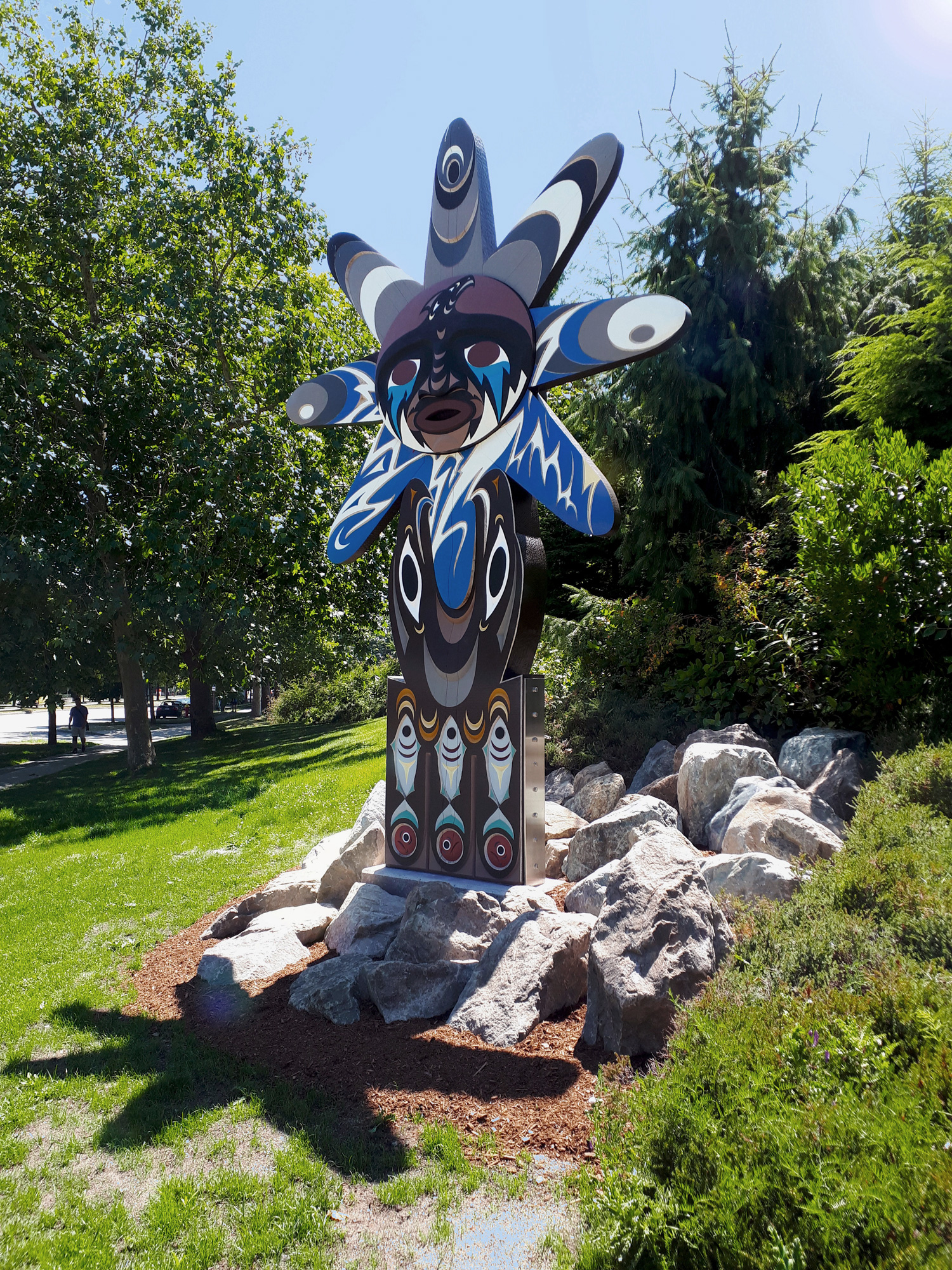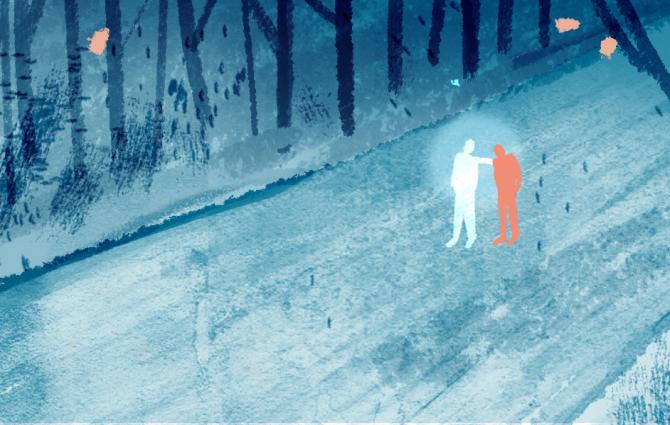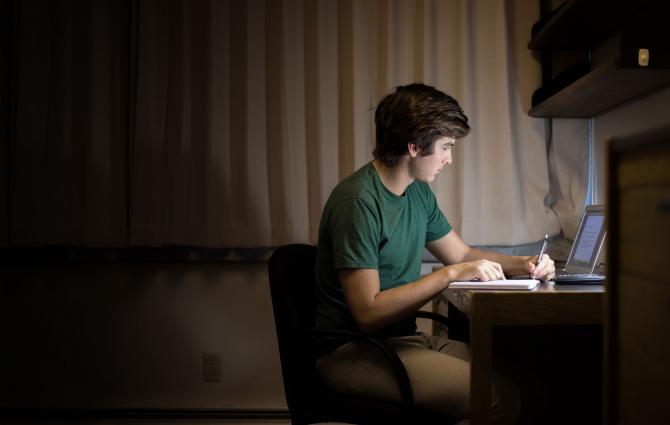Thunder and Take Off are two unique works of art created by Indigenous artists and located on the UBC Vancouver campus.
Since their installation as part of the 2010 Vancouver Winter Olympics, for which they were commissioned, Thunder and Take Off have greeted patrons to the Thunderbird Arena, part of the Doug Mitchell Thunderbird Sports Centre.
Thunder
Thomas Cannell, Musqueam
Near the main entrance to the Thunderbird Arena stands Thunder, a hard-to-miss colourful, five-metre wood sculpture of a sun figure created by Musqueam artist, Thomas Cannell. At the base of the figure are three salmon and three salmon eggs, carried upwards by twin Thunderbirds. To the Musqueam, Thunderbirds are a sign of good luck, as they are known for ensuring the return of salmon and keeping away famine.
An interesting aspect of Thunder is Cannell’s unconventional decision to incorporate a bright electric blue, a colour not traditionally used in Coast Salish art. This striking colour, combined with jagged lines of blue, brown, and white that represent a thunderstorm obscuring the sun figure, creates quite an impressionable image. For the artist, this wasn’t just a personal aesthetic choice—rather this shade of blue is the uniform colour of UBC’s Varsity Athletes, who, of course, also carry the Thunderbird name.
Cannell carved and painted Thunder from old growth cedar. It is the largest solo carving he has ever created.

He spent five months working on the piece in a studio belonging to his mother, Susan Point, an internationally acclaimed artist in her own right. In fact, she also has an art piece commissioned for the 2010 Vancouver Winter Olympics now installed outside the Richmond Oval venue.
Cannell’s family also had a hand in Thunder, so to speak. To the right lower side of the round sun face is a small notch, coloured red. According to Cannell, tucked inside the space are strands of hair, belonging to his wife, son, and daughter.
A photograph of Thunder graces the cover of UBC’s Indigenous Peoples: Language Guidelines.
Take Off
Michael Nicoll Yahgulanaas, Haida

While Thunder stands firmly grounded, Haida artist Michael Nicoll Yahgulanaas’ Take Off soars into the sky outside the players’ entrance on the north side of the Thunderbird Arena.
Take Off mimics the abrupt flight path of a Mallard duck as it takes off from water into the sky. While this image is in itself interesting, Yahgulanaas makes it even more so through the materials he utilizes to depict this fairly common sight in nature. Using three steel beams curving west, to a height of eight metres above the ground, the image of the duck becomes uniquely special once you notice what may not be clear at first glance—that it is a combination of a door and fenders taken from a Volvo covered in copper leaf.
Even subtler is Yahgulanaas’ painting of a hockey goalie, made up of thin black lines, on the side of the bird. The player is illustrated in ‘Haida Manga’ style, which is a fusion of the artist’s own style, including depictions of the Indigenous peoples on Haida Gwaii, with Manga, an artistic form used in popular Japanese comic books.
Yahgulanaas said he decided to use parts from a Volvo over other cars because it is a Swedish product, and there was a strong possibility that Canada would play Sweden for the gold medal in men’s hockey at the 2010 Vancouver Winter Olympics. As it turned out, the game featured Canada winning gold in dramatic fashion over the U.S.
For me, Take Off serves as a reminder of this historic game.
Moreover, the Indigenous aspect of the piece also recalls that the 2010 Vancouver Winter Olympics took place on the unceded lands of the Lil'wat, Musqueam, Squamish and Tsleil-Waututh.
Indigenous Art Series: Find out where you can view Indigenous art on campus and the story behind each piece by checking out this interactive map.



